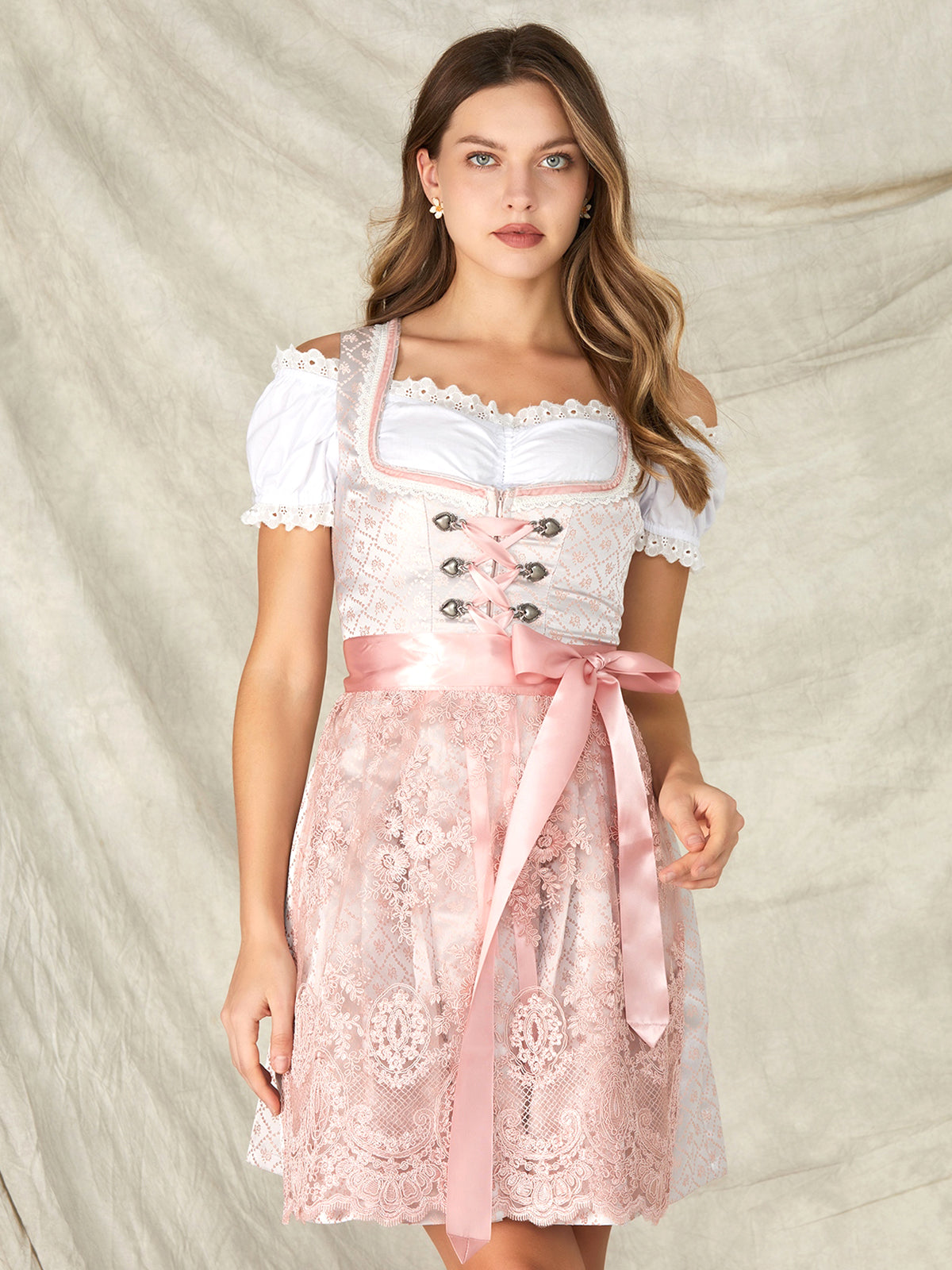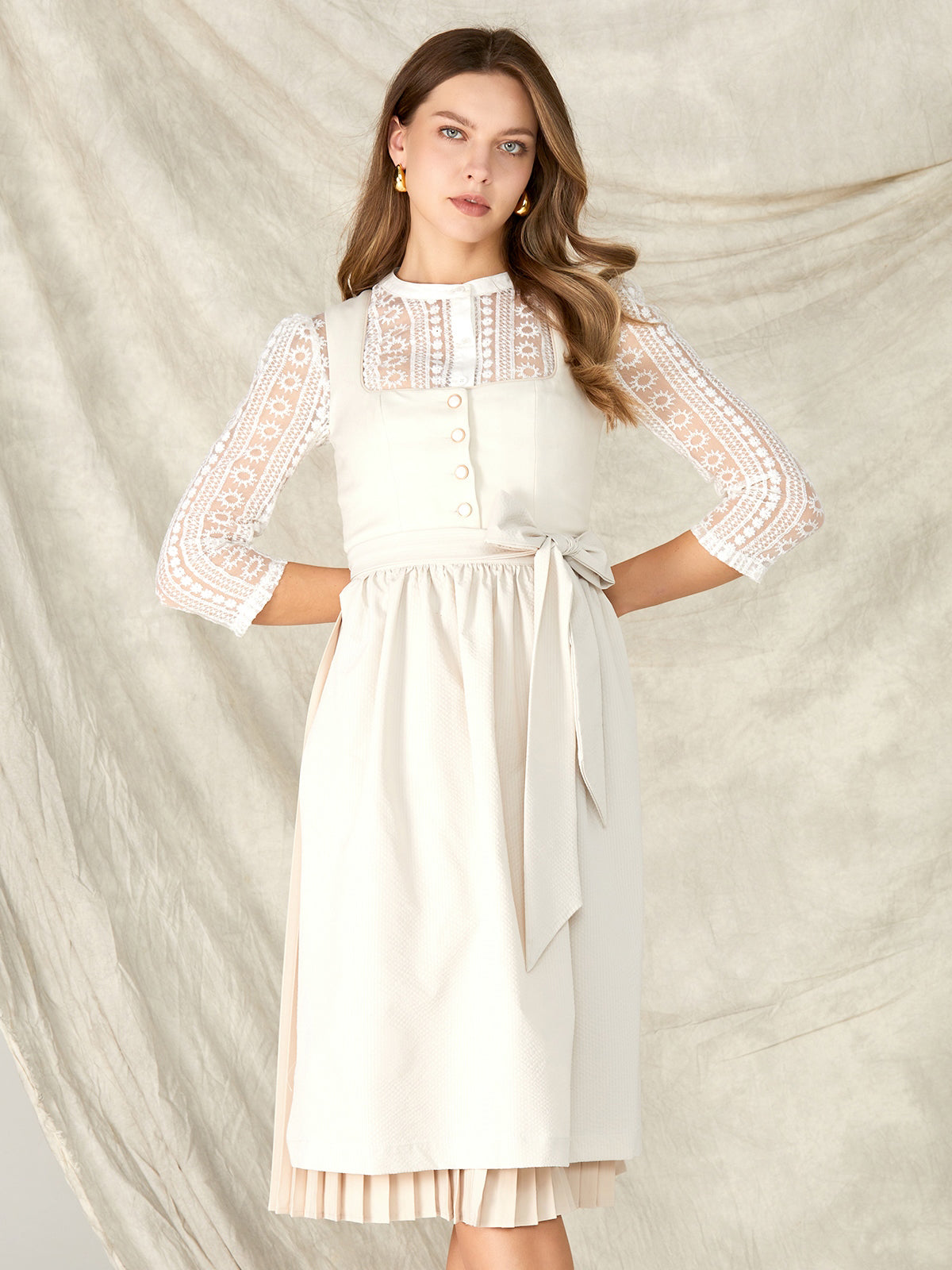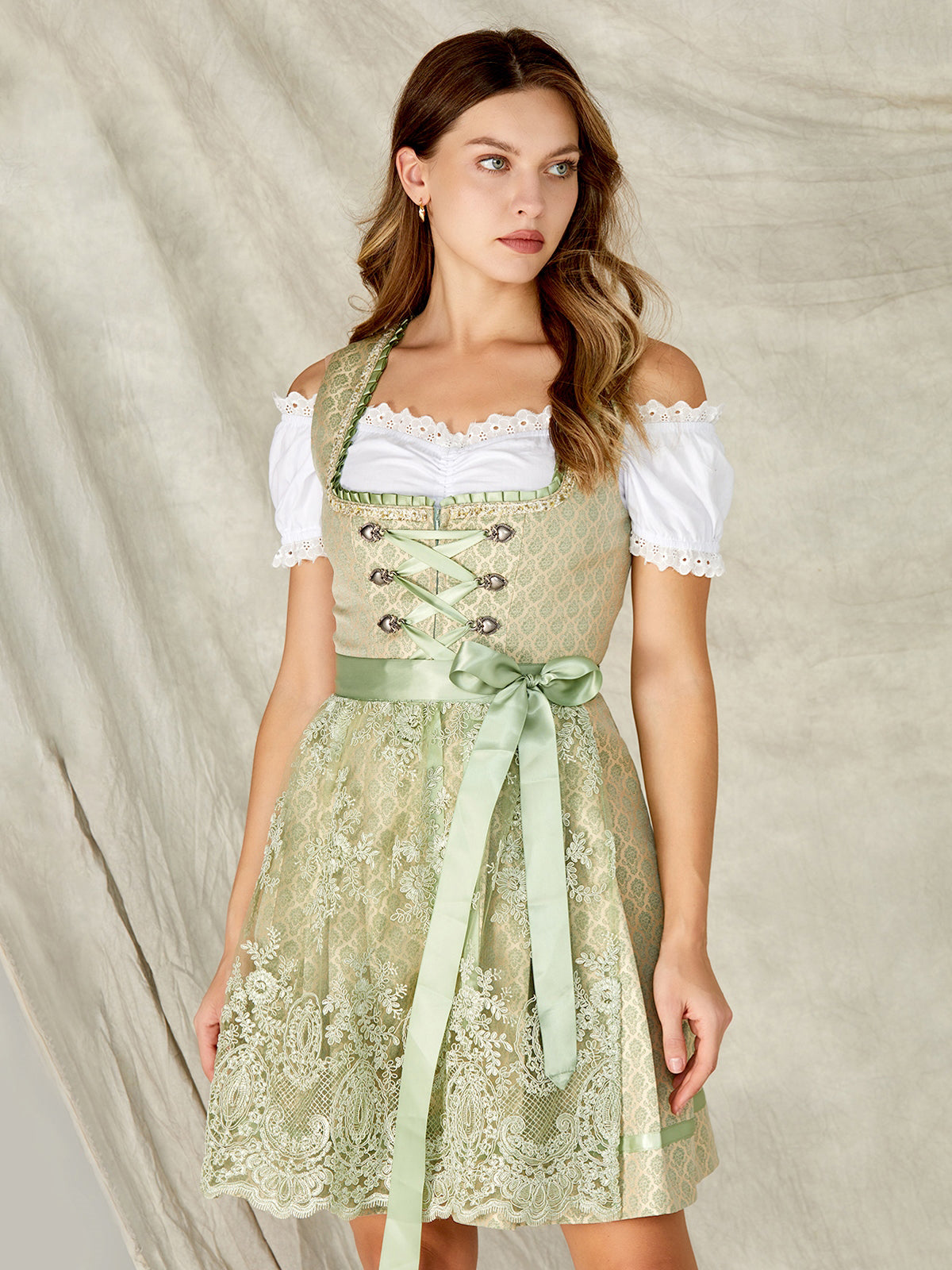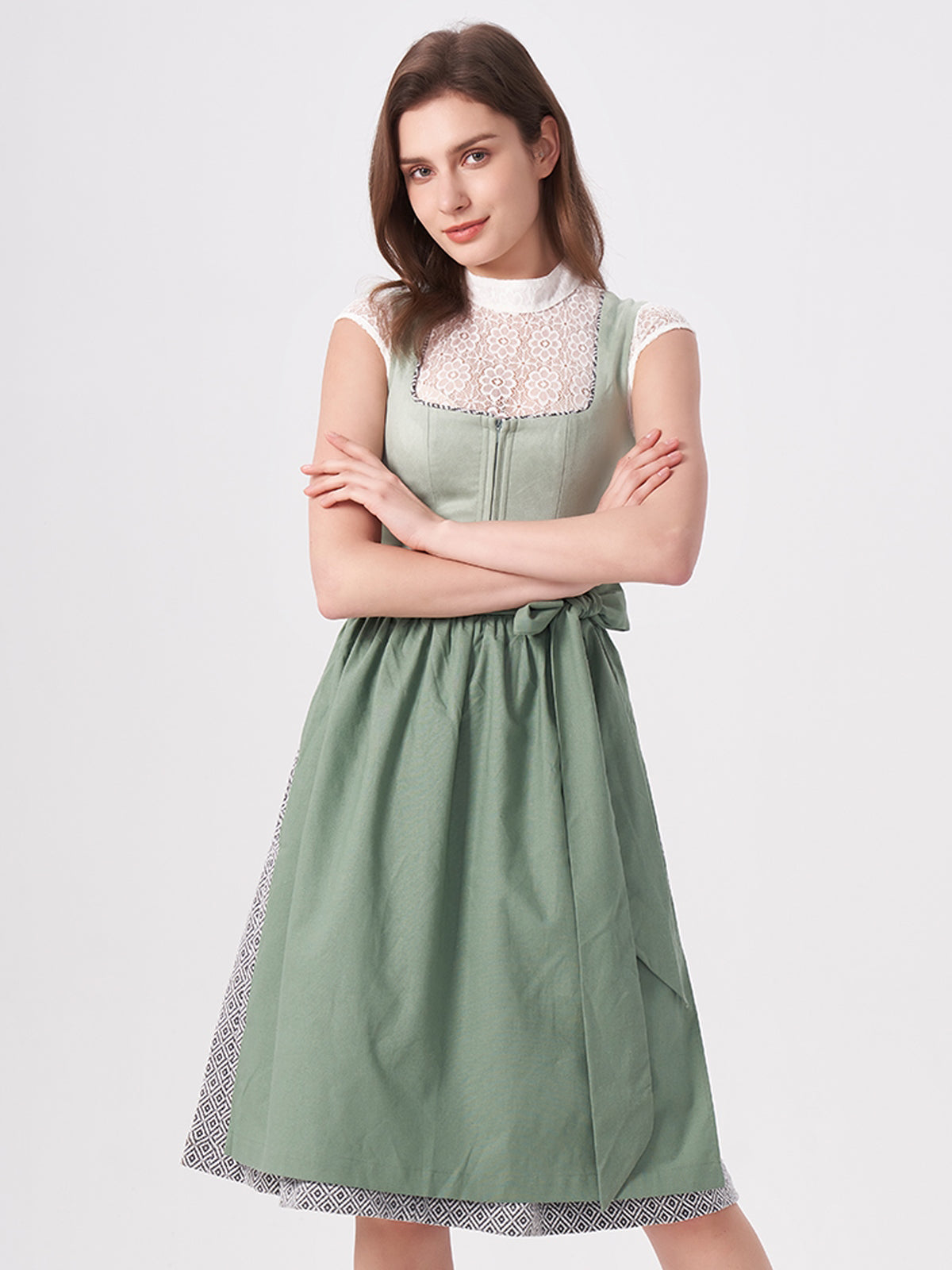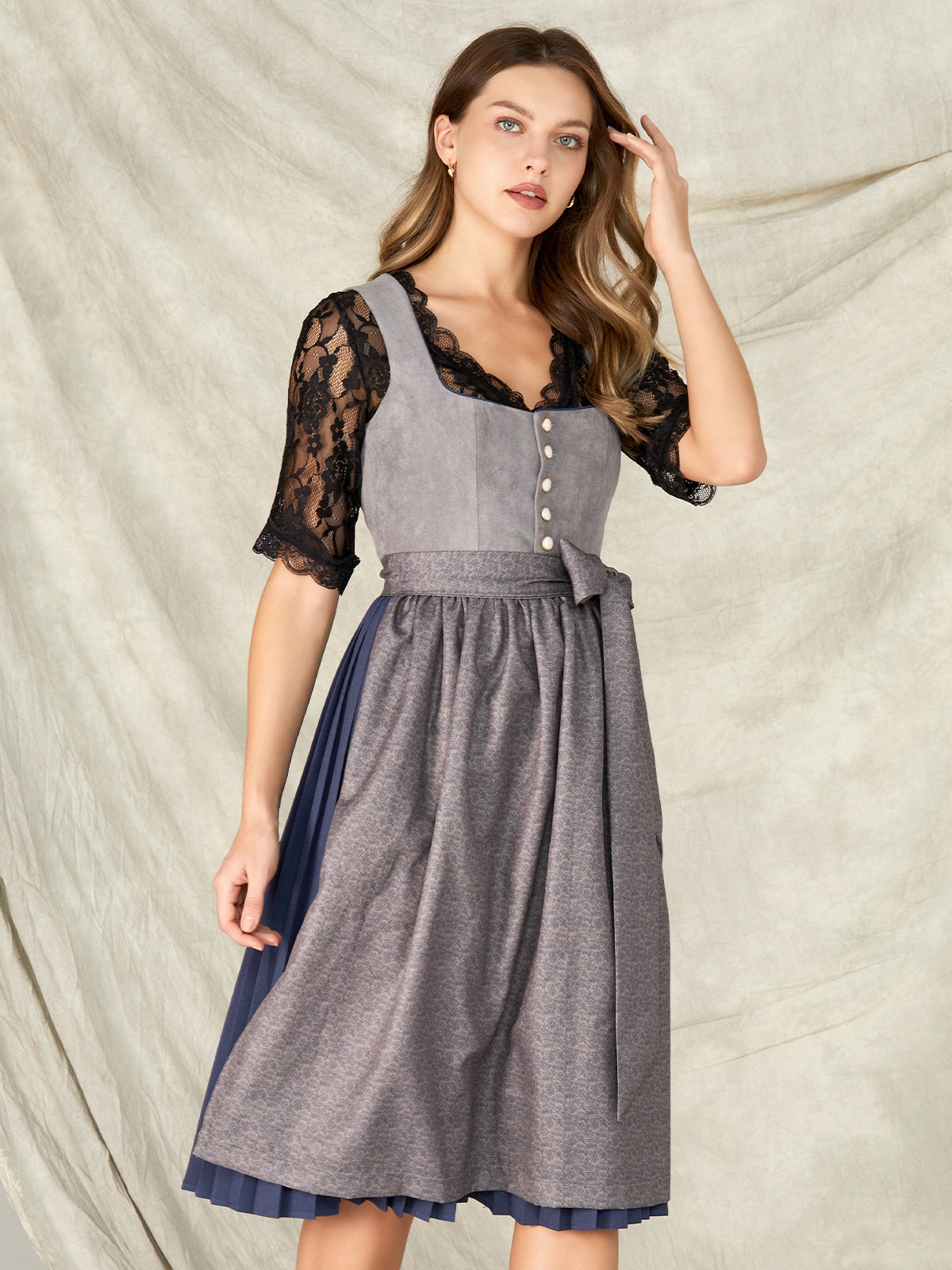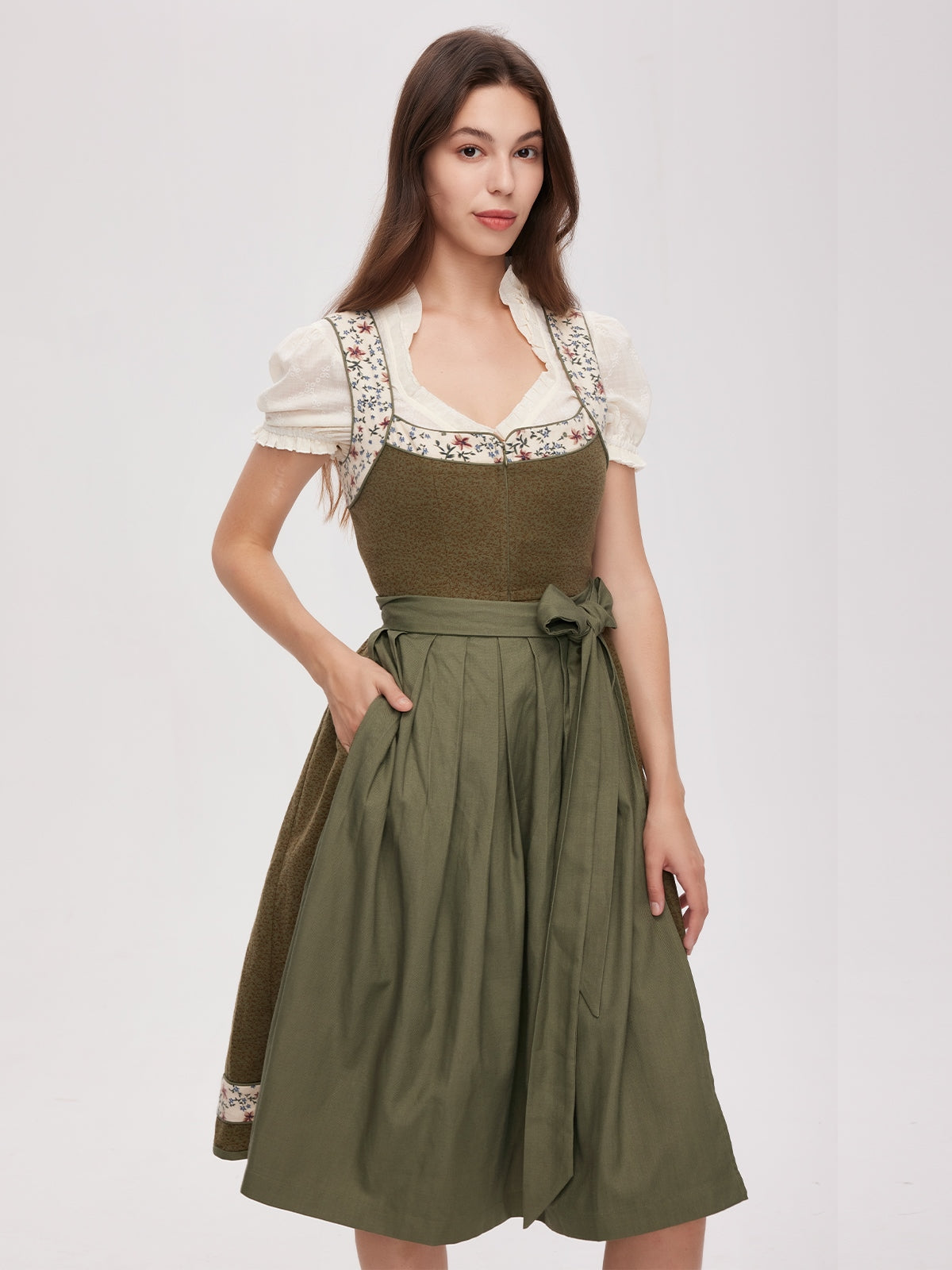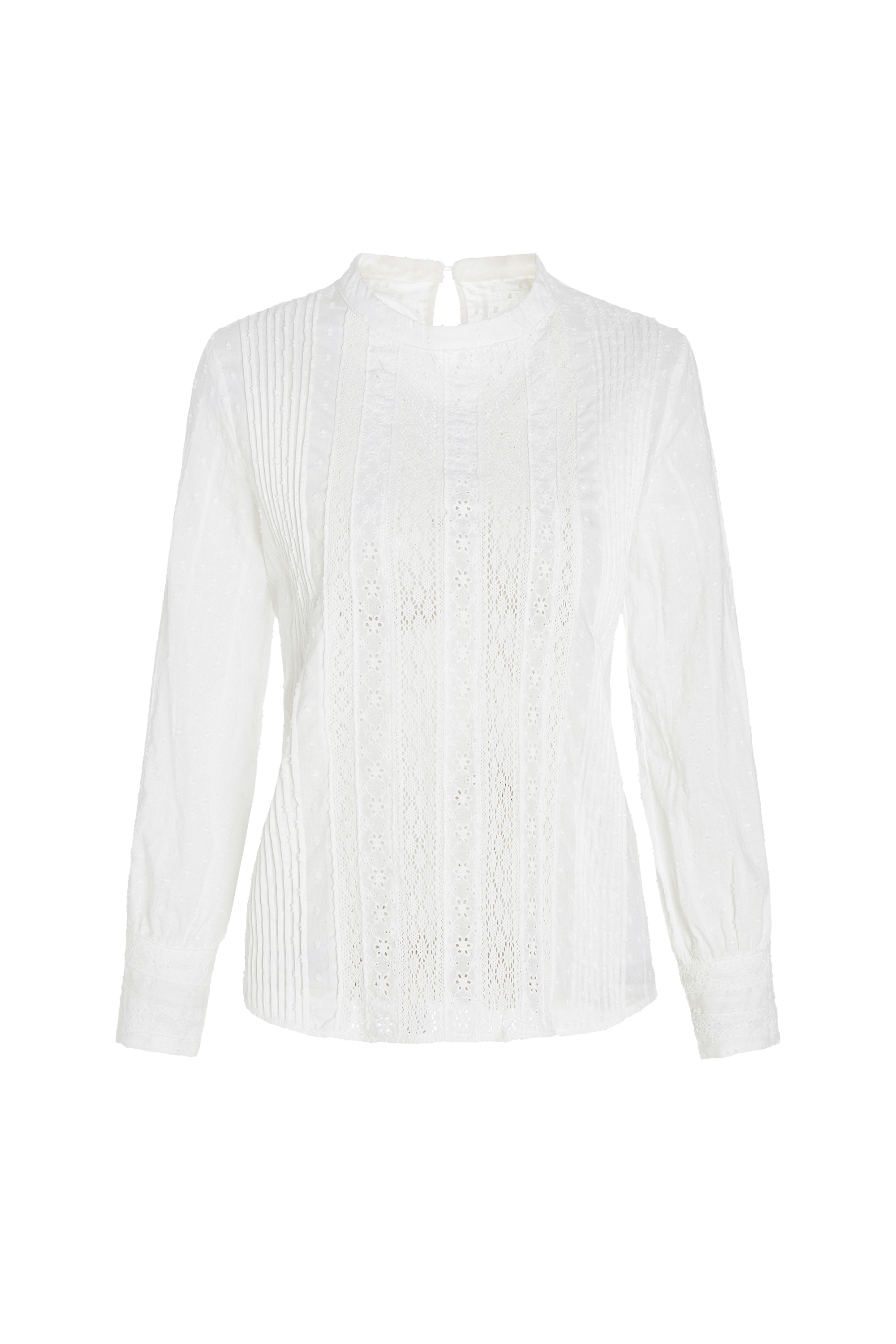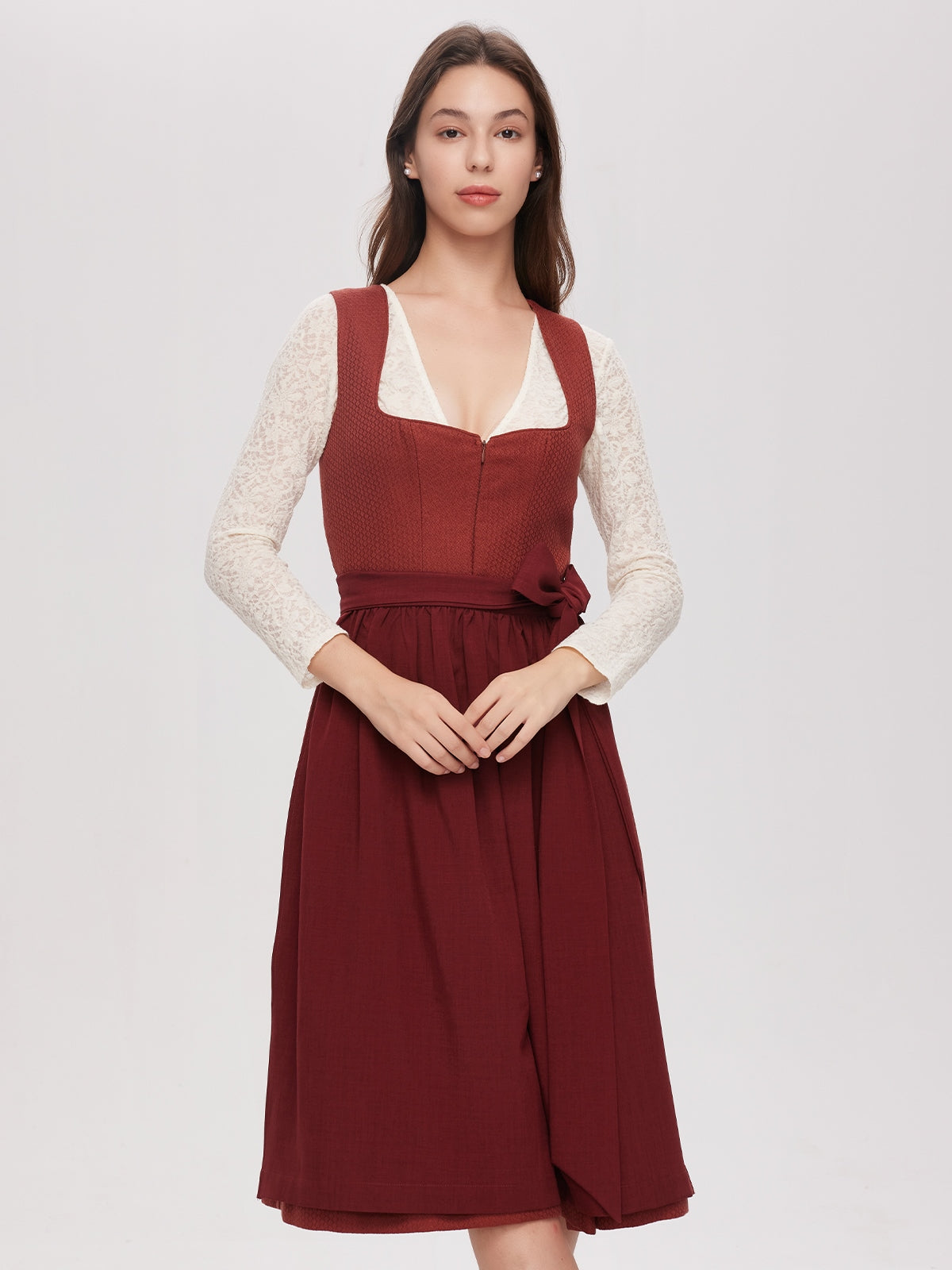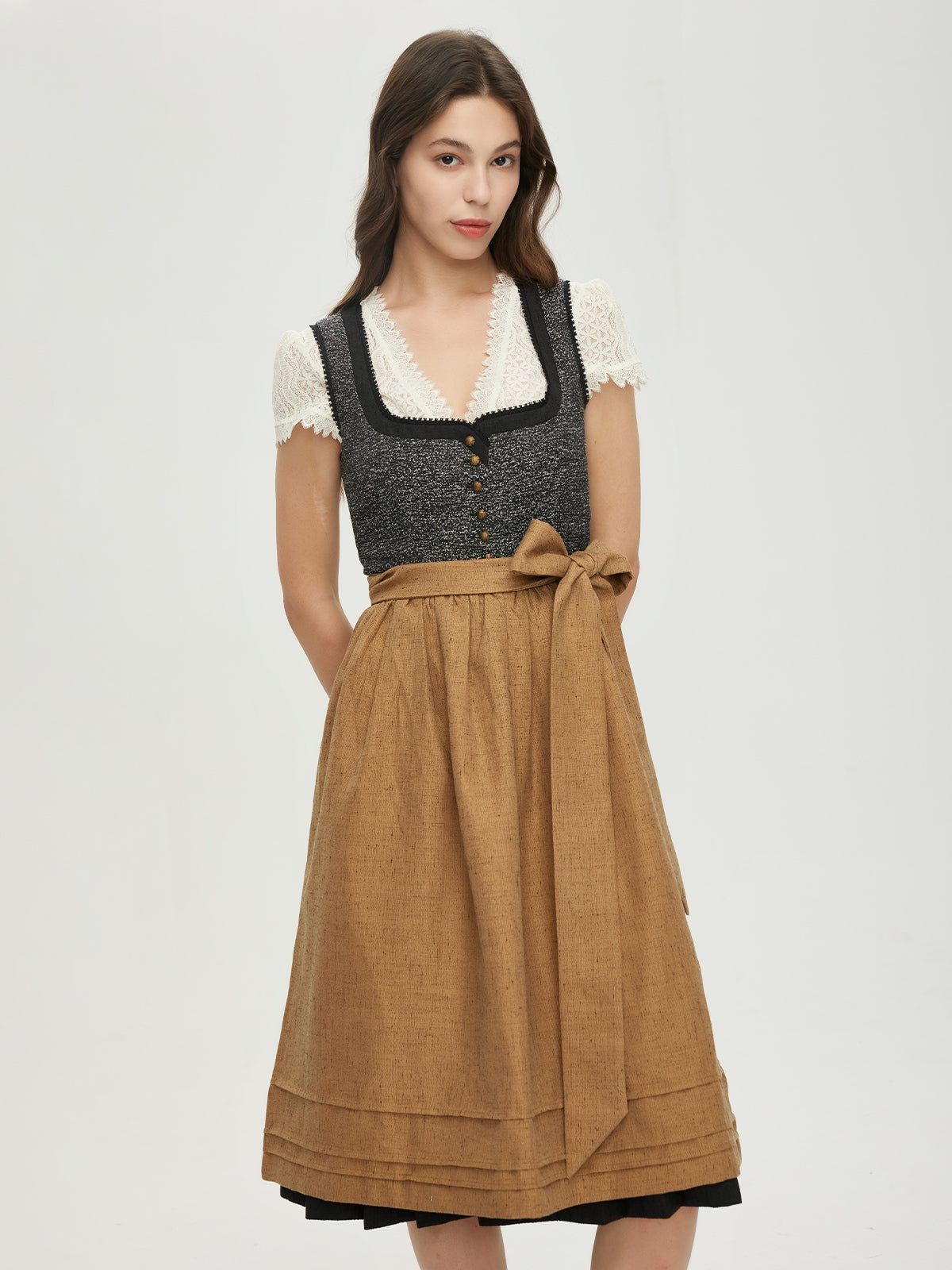Chapter 1: Historical Roots of the Dirndl – From Workwear to Cult Clothing
The word "Dirndl" is derived from the Bavarian-Austrian dialect word "Dirn," which originally meant "young girl" or "maid." Originally, the Dirndl was a simple work dress made of linen or wool, worn in rural regions of Bavaria and Austria. In the mid-19th century, its transformation into a status symbol began: aristocrats and wealthy families adopted the Dirndl as part of their festive wardrobe, embellishing it with embroidery and fine fabrics.
Traditional elements of the dirndl
- Dirndl Green: The green color symbolizes connection to nature and fertility. In Bavarian villages, green was long the preferred color for maids' dresses, as it was associated with rural life.
- Dirndl front zipper: Dirndls used to be closed with buttons or laces. The zipper, which became popular in the 20th century, simplifies dressing and adapts to modern lifestyles.
Chapter 2: Why Dirndl Green is still relevant today
The green dirndl has established itself not only as a festive garment, but also as a casual wear. Here are the reasons why this piece of clothing remains timeless:
1. Colour diversity and adaptability
Green is a versatile color that works in both rural and urban settings. Modern dirndl green collections offer shades like emerald green, olive green, and pastel green to suit a variety of styles.
2. Sustainability and quality
Many manufacturers rely on natural materials such as linen or cotton. Durability is increased by using dirndl models with a front zipper that incorporate durable metal components.
3. Cultural significance
The dirndl is a symbol of Bavarian culture. At events like Oktoberfest, thousands wear dirndls to express their connection to the region.
Chapter 3: Dirndl front zipper – Innovation meets tradition
The dirndl front zipper is an example of how tradition is enriched by modern technology.
Advantages of the zipper
- Comfort: The zipper allows for quick putting on and taking off without having to fasten buttons.
- Practicality: Ideal for days with changeable weather – the clothing can be easily adjusted.
- Design variety: Modern zippers made of stainless steel or painted metal complement the dirndl visually.
Criticisms and solutions
Some purists argue that zippers alter the classic look of the dirndl. However, manufacturers point out that subtle decoration (e.g., rows of pearls along the zipper) can achieve a harmonious look.
Chapter 4: How to choose the perfect green dirndl?
For many, the green dirndl symbolizes special occasions. But choosing the right model requires careful consideration.
1. Fit and cut
- Pay attention to your body contours: Dirndls are available in various cuts – from figure-hugging models to loose-fitting versions.
- Choice of material: Light linen is suitable for summer events, while cotton is ideal in spring/year.
2. Accessories determine the look
- Jewelry: Silver chains or wooden beads emphasize the Bavarian charm.
- Shoes: Traditional leather slippers or modern boots create a deliberate contrast.
3. Use color accents
The green dirndl can be livened up with colorful bows or scarves. Light green looks fresh, while dark green is elegant.
Chapter 5: The Future of the Dirndl – Between Tradition and Modernity
The dirndl has never evolved statically. Modern designers experiment with new cuts and materials while preserving its cultural identity.
Trends 2025
- Dirndl front zipper in neon colors: For young target groups who combine tradition with streetwear.
- Dirndl Green in sustainable production: organic cotton and recycled metal parts set standards.
The role of technology
3D printing techniques enable individual patterns on dirndl sleeves or skirts – a step towards personalized clothing.

